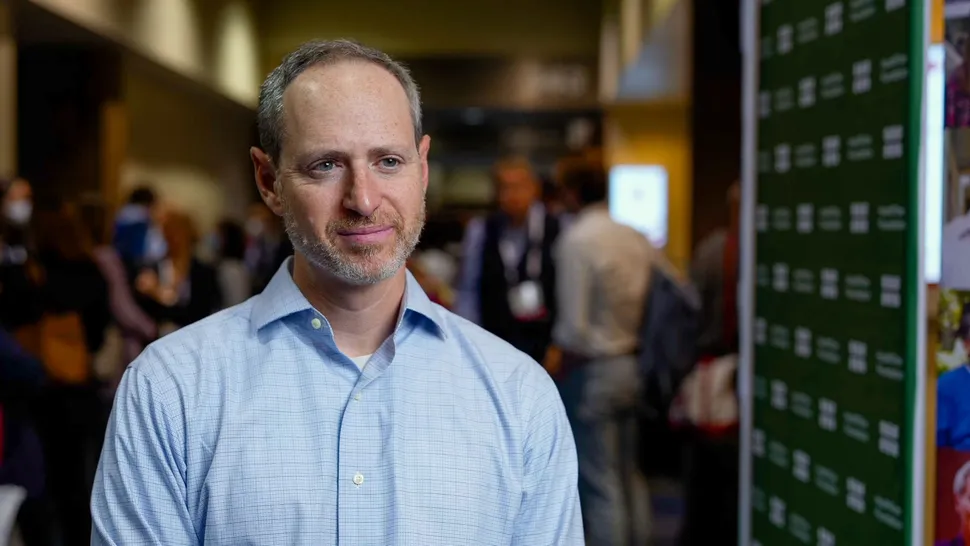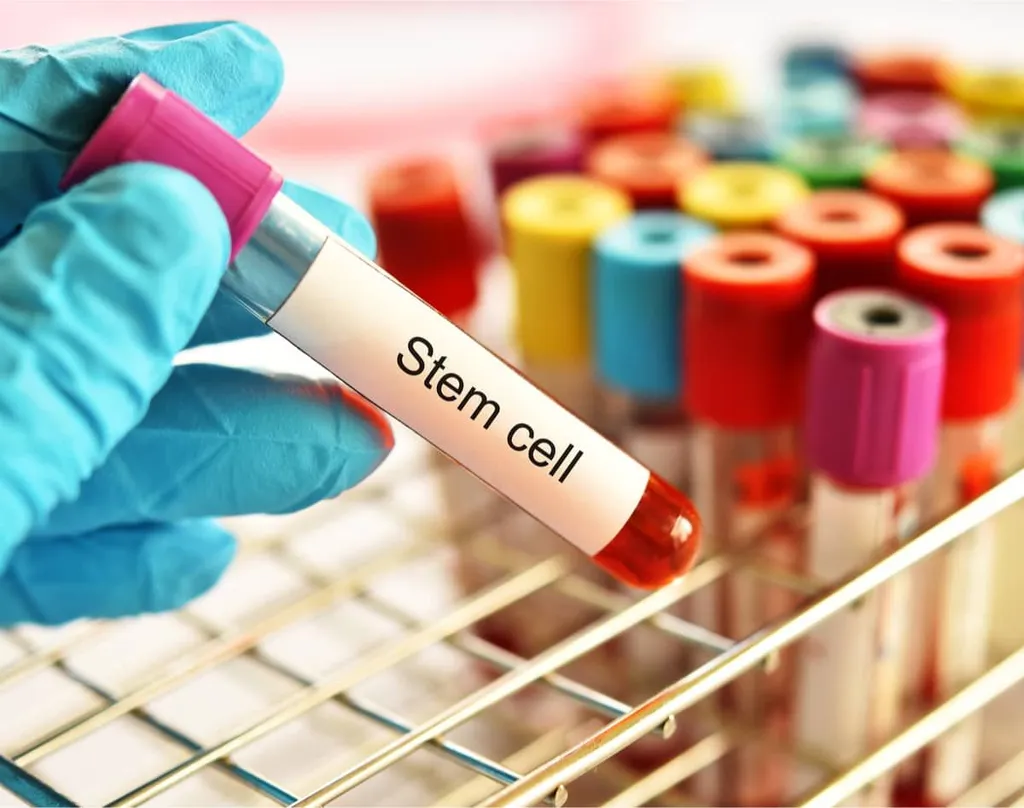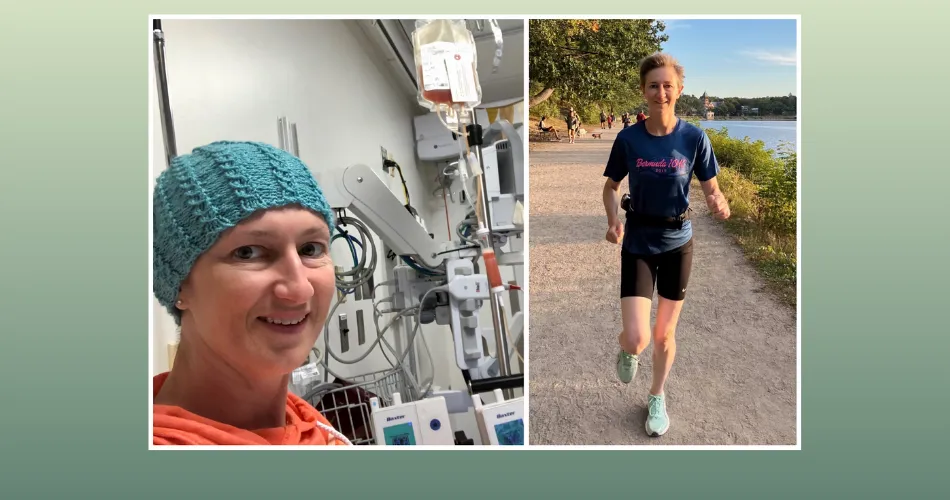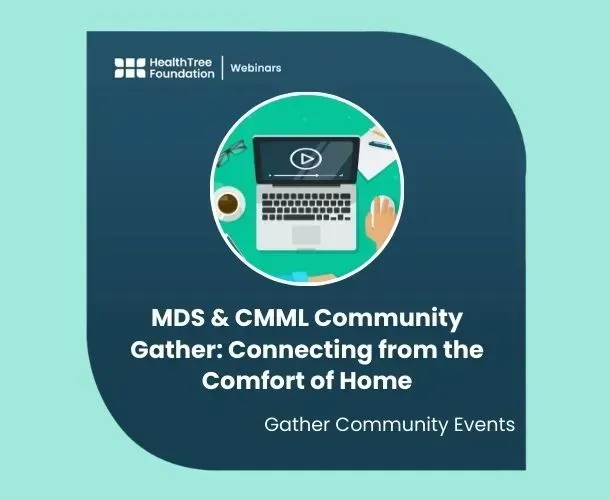ASH 2022: Determining Who Does Well on Venetoclax and Azacitidine in Newly Diagnosed AML with Dr. Pollyea

At the ASH 2022 meeting, we talked to AML specialist, Dr. Pollyea, about his exciting new research that sought to accomplish two main goals:
- To determine if a new classification system was needed to predict who will do well on venetoclax and azacitidine as this is a newer therapy combination for newly diagnosed AML
- To figure out how to classify the patients receiving this combination if a change to the classification system was determined to be needed
Watch the video or read below to hear from Dr. Pollyea about how he and his reseach team are taking steps toward understanding how to better work with and predict outcomes for this new therapy combination. Dr. Pollyea also shared with us a bit of research he found interesting from other presenters at ASH 2022 about the use of menin inhibitors for AML patients.
“Hi, I’m Dan Pollyea, professor of medicine at the University of Colorado here at the ASH 2022 meeting and I'm very excited about a lot of work that folks are presenting.
Some of our work that was presented here, includes a new way to prognosticate patients with newly diagnosed acute myeloid leukemia who are receiving treatment with the new regimen of Venetoclax plus Azacitidine. Historically, patients have been prognosticated with newly diagnosed AML with an accepted prognostic scheme or criteria that’s really based on patients who have received intensive induction chemotherapy. Now that we have another treatment, Venetoclax and Azacitidine, for patients who aren’t eligible for induction chemotherapy, we thought that we would need to update the classification system, the prognostic classification systems, to better account for outcomes for patients who receive this new therapy.
So, we first showed that indeed the classical way of prognosticating patients doesn’t apply to Venetoclax patients. That was good to see, that was our assumption. Then we came up with a new classification system to create three different risk groups. A favorable, an intermediate, and a poor risk group for patients receiving Venetoclax plus Azacitidine. It was fairly simple the way this worked out, it's all based on the status of four different gene mutations. The presence or absence of these four gene mutations can put a patient into one of these three categories.
This is a really important first step to be able to better predict patients on this new regimen: who will do well and who will do poorly. That’s the first step in being able to intervene and modify the therapy for patients who, for instance, aren’t expected to do well versus leave the therapy as is for patients that we think are going to do well.
We are very happy about this preliminary step and very happy to share it at this ASH meeting.
I think what patients should also be aware of now, are some emerging therapies targeting a protein called menin. This is relevant for patients with particular abnormalities. One is called KMT2A and the other is an NPM1 mutation. The patients who have those abnormalities may be eligible to receive a menin inhibitor and we just saw results from two clinical trials showing that these are very promising therapies for those subsets of AML patients. It’s definitely something to be excited about and keep looking at in the near future.”
At the ASH 2022 meeting, we talked to AML specialist, Dr. Pollyea, about his exciting new research that sought to accomplish two main goals:
- To determine if a new classification system was needed to predict who will do well on venetoclax and azacitidine as this is a newer therapy combination for newly diagnosed AML
- To figure out how to classify the patients receiving this combination if a change to the classification system was determined to be needed
Watch the video or read below to hear from Dr. Pollyea about how he and his reseach team are taking steps toward understanding how to better work with and predict outcomes for this new therapy combination. Dr. Pollyea also shared with us a bit of research he found interesting from other presenters at ASH 2022 about the use of menin inhibitors for AML patients.
“Hi, I’m Dan Pollyea, professor of medicine at the University of Colorado here at the ASH 2022 meeting and I'm very excited about a lot of work that folks are presenting.
Some of our work that was presented here, includes a new way to prognosticate patients with newly diagnosed acute myeloid leukemia who are receiving treatment with the new regimen of Venetoclax plus Azacitidine. Historically, patients have been prognosticated with newly diagnosed AML with an accepted prognostic scheme or criteria that’s really based on patients who have received intensive induction chemotherapy. Now that we have another treatment, Venetoclax and Azacitidine, for patients who aren’t eligible for induction chemotherapy, we thought that we would need to update the classification system, the prognostic classification systems, to better account for outcomes for patients who receive this new therapy.
So, we first showed that indeed the classical way of prognosticating patients doesn’t apply to Venetoclax patients. That was good to see, that was our assumption. Then we came up with a new classification system to create three different risk groups. A favorable, an intermediate, and a poor risk group for patients receiving Venetoclax plus Azacitidine. It was fairly simple the way this worked out, it's all based on the status of four different gene mutations. The presence or absence of these four gene mutations can put a patient into one of these three categories.
This is a really important first step to be able to better predict patients on this new regimen: who will do well and who will do poorly. That’s the first step in being able to intervene and modify the therapy for patients who, for instance, aren’t expected to do well versus leave the therapy as is for patients that we think are going to do well.
We are very happy about this preliminary step and very happy to share it at this ASH meeting.
I think what patients should also be aware of now, are some emerging therapies targeting a protein called menin. This is relevant for patients with particular abnormalities. One is called KMT2A and the other is an NPM1 mutation. The patients who have those abnormalities may be eligible to receive a menin inhibitor and we just saw results from two clinical trials showing that these are very promising therapies for those subsets of AML patients. It’s definitely something to be excited about and keep looking at in the near future.”

about the author
Mary Arnett
Mary joined HealthTree in 2022. She is now the AML & MDS Patient Engagement Manager. She is passionate about giving power to patients through knowledge and health education. If she can help one patient feel more confident participating in discussions with their healthcare team and making treatment decisions, she will feel like she has succeeded. When she isn't advocating for patients, she loves being an aunt, attending concerts, and experimenting with new recipes in the kitchen.
More on Conferences
Trending Articles

Get the Latest Acute Myeloid Leukemia Updates, Delivered to You.
By subscribing to the HealthTree newsletter, you'll receive the latest research, treatment updates, and expert insights to help you navigate your health.
Together we care.
Together we cure.
3x Faster.












